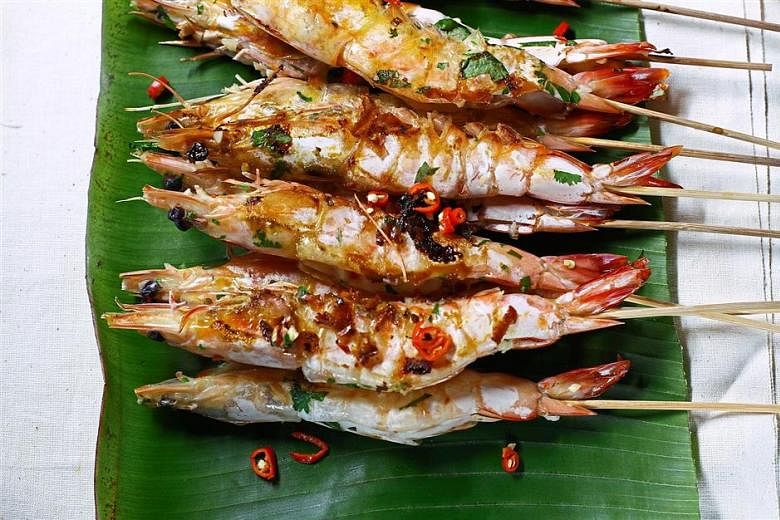(THE STAR / ASIA NEWS NETWORK) - "When they are diagnosed with diabetes and told that they need to change their eating habits, people get scared," says dietitian Goo Chui Hoong.
"They think it's difficult, or they think they'll need to eat bland food forever. That's the general impression - but it's a mistaken assumption."
So, when it comes to healthy eating, we basically need to get out of our own way and vanquish a few presupposed notions.
"A diabetic would basically just want to eat a healthy, balanced diet - and so would everyone else," says Goo.
"We have such high rates of diabetes and obesity in this country, we need to significantly lower sugar and carb intake to actually prevent it, not just deal with it after diagnosis."
According to the Ministry of Health's National Health and Morbidity Survey (NHMS) 2014, the estimate is that there are 3.5 million diabetics nationwide, and about 1.7 million of those are as yet undiagnosed. The numbers aren't age-dependent - all age ranges are showing a significant increase in cases.
And then there's the matter of the national obesity pandemic. All of this means only one thing: if you've got diabetes, eat better to manage it. And if you don't have it, eat well so that remains the status quo!
For Goo, eating well is both a holistic endeavour and an exercising of common sense.
"You don't eat a certain way just because you are diabetic," she says. "The same well-balanced diet also lowers blood cholesterol, takes care of the health of your eyes, helps to prevent cancer …."
When you are diabetic, your body doesn't have enough insulin or the insulin it does have is not working properly to break down the sugar (insulin resistance). So basically, you can't break down sugar properly.
Eating a low-carb diet helps to prevent the sugar spikes that can result in hyperglycaemic shock.
Goo has come up with three low-carb, low-sugar recipes that should appeal to even the fussiest eater. And as you'll see on each, prep time for even the most involved recipe is no longer than 30 minutes.
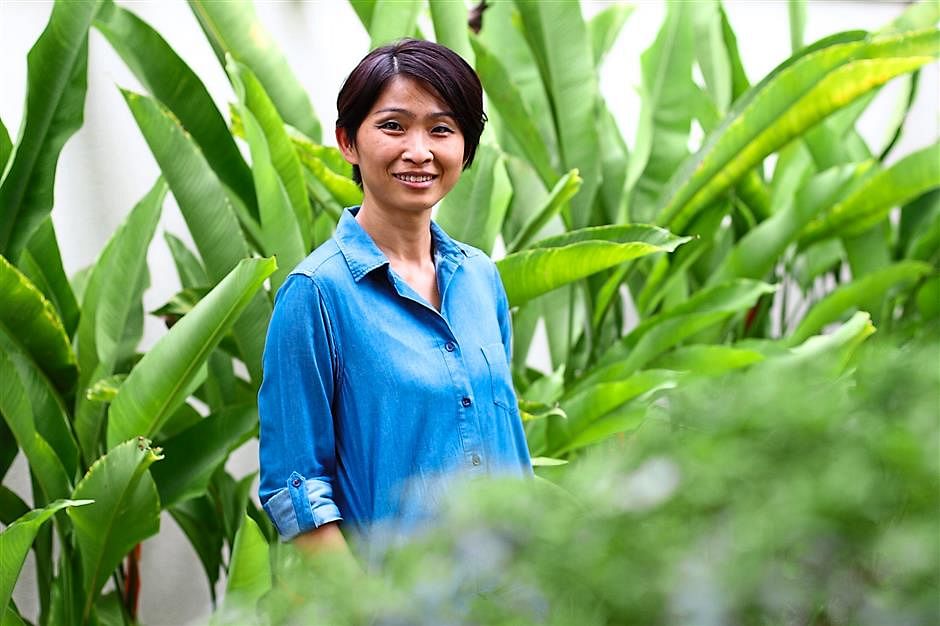
"I recommend the grilled prawns because they are a lean source of protein - often, even lower in fat than chicken breast," she says. "And while they do have some dietary cholesterol, the thing that you want to watch out for is actually saturated fat, which prawns are low in."
No oil or fat is needed to grill the prawns if you use a non-stick grill, and they work with a variety of flavourings - from simple salt and pepper, to lime and coriander, or spice mixes like harissa, used extensively in Middle Eastern and North African cooking.
For the second recipe, Goo chose quinoa as an alternative carb source for those who need a little in their diet.
Quinoa is a good choice for several reasons: "It's much lower in carbs than rice, portion for portion. And because it's also much higher in protein, eating comparatively less of it will make you full, fast. For people with diabetes, eating quinoa helps to prevent sugar spikes," says Goo.
"Because we are such a rice-eating society, it's sometimes easier to find an alternative source of carbs than cutting them out altogether. It's more sustainable," she adds.
If you find it hard to make that switch all at once, try mixing quinoa with rice - over time, increasing the quinoa and decreasing the rice.
"Quinoa can be used in any way rice is. Even formed into burger patties," says Goh. Plus, it has a slightly shorter cooking time.
Finally, Goh provides an exceptionally easy pineapple sorbet as a more interesting way to eat fruits. "Fruits have sugar, so diabetics need to eat them in small amounts and space out the fruit consumption," she says.
"Basically, you have two groups of people - fad dieters who follow every diet rigorously and people who don't take any sort of diet into account and just eat high amounts of carbs and saturated fats, etc," says Goo. The path she would advocate lies between the two.
Here's a quick rule of thumb: "If you look at your plate, carbs should only take up a quarter of it, with protein another quarter, and then half the plate should be vegetables," she says.
GRILLED PRAWNS WITH GARLIC, CHILLI AND CORIANDER
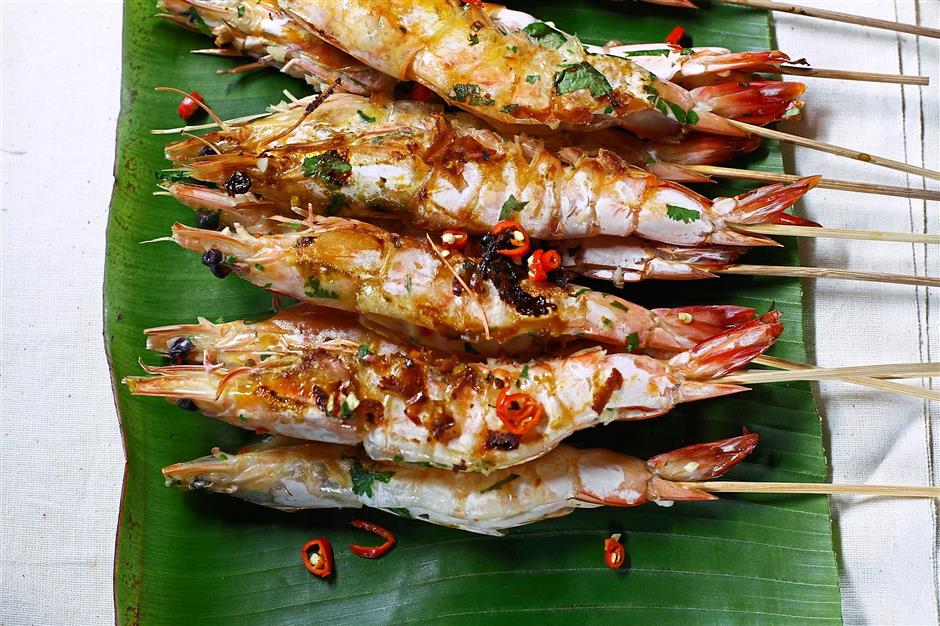
Serves 2
Preparation time: 20 minutes | Cooking time: 3 minutes
6 large or 10 medium-sized (360g) prawns, with shell
1 clove (10g) garlic
1/2 (15g) red chilli
small bunch (5g) coriander
1/8 tsp salt
pepper, to taste
bamboo skewers
Clean the prawns. Make a slit down the back of each prawn and devein.
Peel the garlic and chop finely. Chop the chilli and coriander finely as well.
Place the garlic, chilli, coriander and prawns in a bowl. Add the salt and pepper, and toss so the prawns are well-coated.
Thread each prawn onto a bamboo skewer. This prevents the prawns from shrinking too much during cooking.
Heat the grill until very hot. Grill the prawns for 2 minutes on each side.
Serve with the quinoa kerabu and some blanched vegetables.
Nutrient content for 1 serving (3 large or 5 medium prawns)
Energy 95kcal; Carbs 1.7g; Protein 20.7g; Fat 0.4g; Dietary fibre 0.1g
QUINOA KERABU
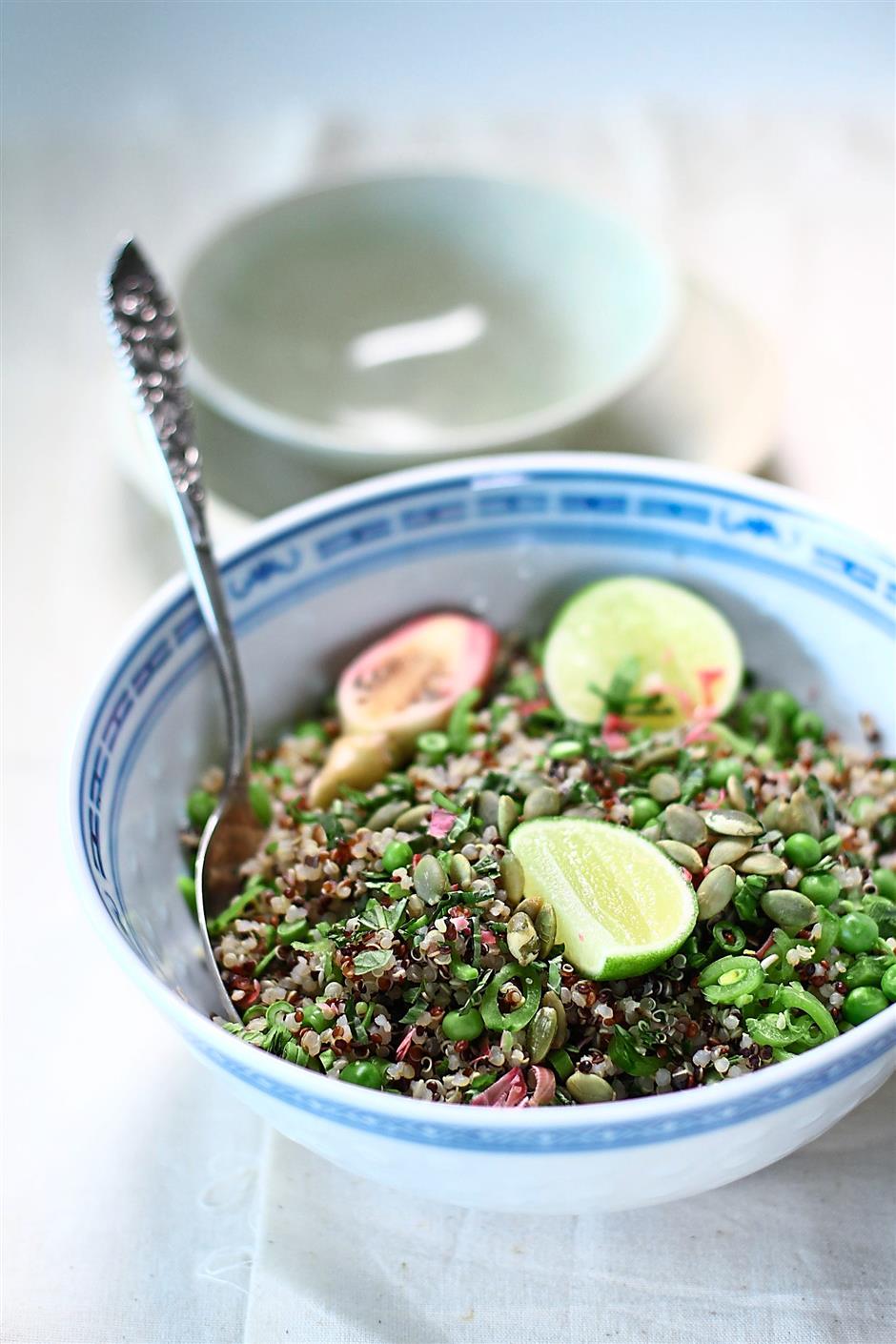
Serves 2
Preparation time: 30 minutes | Cooking time: 20 minutes
1/2 cup (85g) tri-coloured quinoa
1 cup (240ml) water
1/4 cup (35g) frozen baby peas, soaked in boiling water for 1 minute
1/4 cup (10g) finely sliced four angle beans
1/4 cup (30g) finely sliced long beans
1 tbsp (5g) finely shredded torch ginger flower
4 sprigs each polygonum (daun kesom), mint and turmeric leaves, finely shredded
1/8 tsp salt, or to taste
1 tsp (5g) toasted pumpkin seeds
1 lime, cut into half
Rinse the quinoa. Add raw quinoa and water into a small pot.
Bring to a boil, and turn the heat down to a simmer for about 20 minutes.
Remove from heat and leave the cooked quinoa to cool.
Fluff the quinoa up and mix with the drained baby peas, shredded beans, herbs and torch ginger flower. Season with salt.
Serve garnished with toasted pumpkin seeds and lime halves.
Nutrient content for 1 serving
Energy 145kcal; Carbs 25.9g; Protein 6.1g; Fat 2.4g; Dietary fibre 3g
PINEAPPLE SORBET WITH KAFFIR LIME
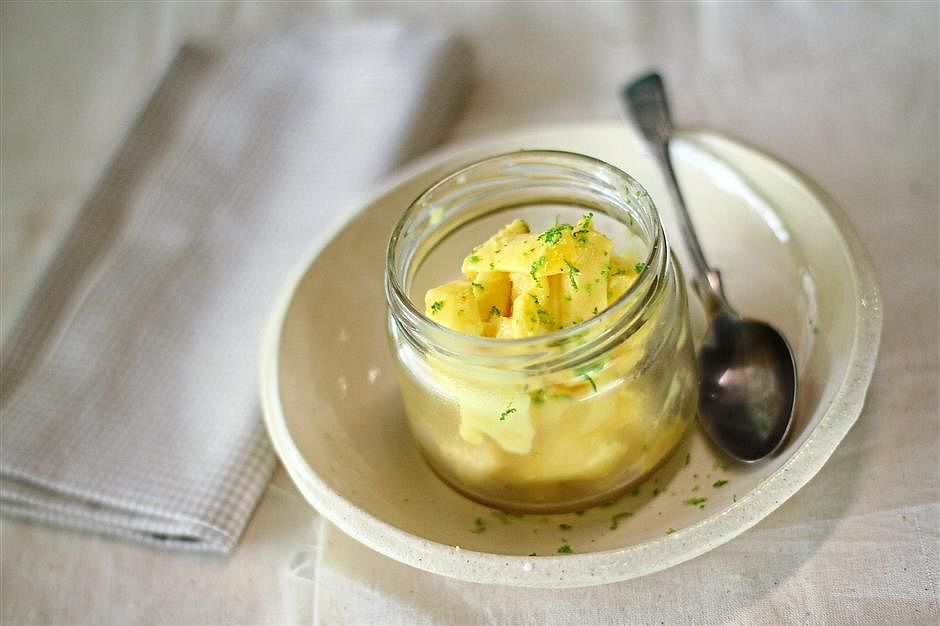
Serves 2
Preparation time: 10 minutes
200g ripe pineapple flesh, peeled and cubed
kaffir lime zest
Freeze cubed pineapple overnight. Using a high powered blender or cold pressed juicer, blend frozen pineapple cubes until you get a smooth sorbet texture.
Grate some kaffir lime zest over the sorbet and serve immediately.
Nutrient content for 1 serving
Energy 51 kcal; Carbs 13.2g; Protein 0.5g; Fat 0.1g; Dietary fibre 1.4g
